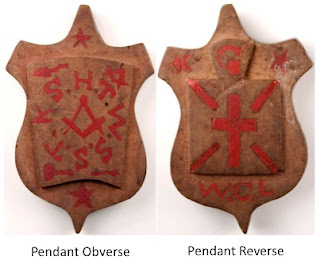I think I see a pattern emerging: On the last Thursday of the month, the Chancellor Robert R. Livingston Masonic Library is the place to be. On the evening of Thursday the 25th, the library will host Armin Kuljiš who will present “Art, Science, and Spirituality.” From the publicity:
Art, Science, and Spirituality
Presented by Armin Kuljiš
Thursday, August 25
6:30 p.m.
Chancellor Robert R. Livingston Masonic Library
of the Grand Lodge of New York
71 West 23rd Street
14th Floor
Manhattan
Based on three key elements: art, science, and spirituality, Armin Kuljiš’ mission is to “awake consciousness” of the miracle and beauty of life, from the simplest to the most complex events. He seeks to transmit this combination of thoughts, feelings and knowledge through his artwork, which includes painting, drawing, engraving, urban art, digital design, and photography. Armin’s art flows by either combining techniques or applying each one of them separately. Within its abstract, nature many of his pieces have a strong spiritual content amalgamated with miscellaneous shapes, colors, and architectonic designs. Through his photography, enriched with light, shade, and beautiful reflections, Armin invites us to focus our attention on the magnificence of simple daily life images.
“Serendipia” represents the way Armin Kuljiš—through lines, strokes, and highlights—lets and makes things happen to share his gratefulness for life. It is also an invitation to enjoy art from different perspectives.
Armin Kuljis was born in La Paz, Bolivia in 1981. He graduated as an Architect Summa Cum Laude from Universidad de Aquino in La Paz in 2005. Later, his passion for art and culture brought him to Mexico City, where he also earned a Master’s Degree in Architecture with an honorable mention at the Universidad Nacional Autónoma de México in 2009. In order to enrich his techniques, Armin studied painting, drawing, and composition, screen painting art and engraving at the Real Academia San Carlos in Mexico City. In addition, he worked as a professor at both undergraduate and postgraduate levels at the Universidad La Salle in Mexico.
From 2007 to 2015, Armin has participated in several collective and individual art exhibits in Bolivia, Mexico, and the United States. As an artist, his main source of inspiration is nature in all its manifestations, and he devotes an important amount of time studying and teaching architectural biomimechry and sacred geometry.





























































































